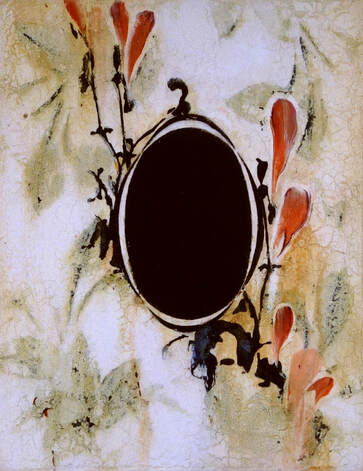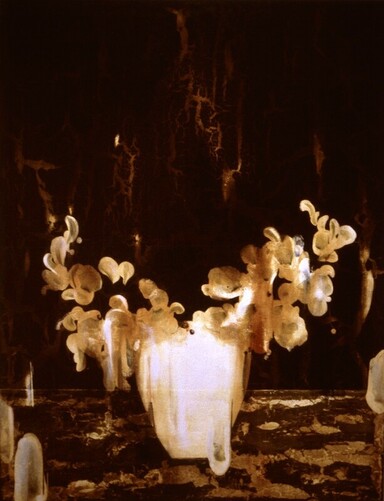Selected Reviews
First-rate First Shows
The Boston Globe, May 27, 1993
- Nancy Stapen
|
First-rate First Shows
It’s always invigorating to encounter a promising new artist. Three galleries this week are featuring the first Boston shows of such artists. All are very different, all well worth a look. Although only 31, Andrew Young, a Chicago painter, has already attracted national attention. He works in the now rare medium of egg tempera, the result of a formative encounter with 15th-century Sienese painting while on a Rotary Scholarship in Italy in 1983. With their architectural references, multiple glazes and warm palette of umber, gold, sienna and cream, punctuated by splashes of red and blue, Young’s paintings have the structure, luminosity and chromatic richness of early Italian Renaissance painting. Young was originally a biochemist, and his interest in living things seems an equally important factor in the work. The paintings have a quality of still life, with images of flowers, plants, stenciled birds and fish. But this is still life through a dreamy, romantic lens; Young’s illusionistic forms are soft-edged and ethereal, as if conjured from memory. A repeating circular motif layered over these forms might be read as microscopic examinations of their structure, or as magnified drops of pond water, swarming with organic life. |
Orange Lips and Green, 1992
Egg tempera on wood panel, 15.5 x 13 in |
|
Hide the Eggs, 1993
Egg tempera on wood panel, 40 x 31 in. |
Countering this gossamer organicism are architectural, geometric spatial organizations, sometimes very bold, sometimes less prominent, that recall quattrocento architectural iconography, as well as such modern phenomena as geometric abstraction.
The fascination in these paintings lies in their integration of art, nature and architecture. Young synthesizes these elements in barely perceptible ways. For example, his deliberately cracked and distressed surfaces recall peeling walls and frescoes, but they also suggest microbial forms. In this way Young connects the spirituality conveyed in early Renaissance art to a living moment. With their exquisite surfaces, otherworldly light and geometric underpinnings, the paintings suggest that the divine radiance of 15th-century Italian painting, may be accessed in a harsher, 20th-century present. |

